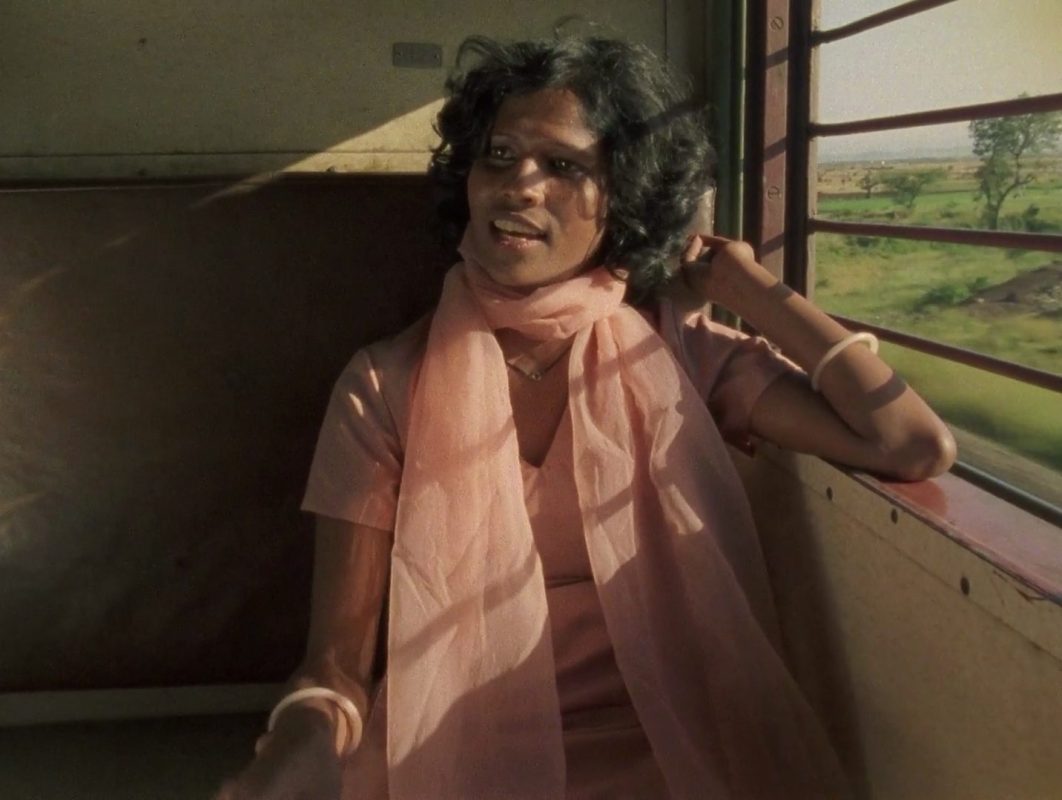Forty years after “India Cabaret” (1985), Mira Nair’s documentary on the lives of Bombay’s bar dancers, I encountered it for the first time, thanks to a former colleague who shared a YouTube link. As someone who’s flirted with misanthropy for years, this film nearly hammered the second-to-last nail into the coffin of my cynicism (still waiting for the last hammer!).
I have jotted my observations in the form of a few subheadings so that it’s easier to understand each segment amongst the cacophony of thoughts.
1. Shame
“Shame? Why Shame? You leave shame behind when you enter this profession!”
Having studied in an all-girls school in Delhi, I remember with painful clarity the kind of “etiquette” we were taught to fulfill the conditions of becoming a “good woman.” Teachers would often pause to offer unsolicited advice.
Good woman traits 101: Skirts below the knee, voice as low as Amrita Rao’s character in Vivah, and modesty should be like a blanket.
Watching “India Cabaret,” I realised that the shame is stitched to the very hem of a woman’s body. Women are made to fear the consequences of being too loud with their expressions of visibility; the cabaret dancers in Mira Nair’s documentary had also been handed versions of the same narrative, only theirs came with harsher consequences. The same lens of control and morality is applied to these women, but of course, magnified tenfold!
True freedom begins when we release ourselves from the weight of anticipated judgment and the mental choreography of “What will they think?” Shame is rarely about the act itself; it’s the internalized gaze that teaches us to monitor ourselves before anyone else does. It personally felt liberating to see the dancers free from the societal burden of shame. It should not be misconstrued as them being shameless; rather, being free from the shame that they were expected to carry.
Sometimes, I feel that for women, simply existing becomes a matter of shame. It reminded me of “Malèna” (2000), where Monica Bellucci becomes an object of leers, men’s fantasy, women’s gossip, and condemnation for just being there. If women are to be judged either way, let it be for something we chose – better be a free cabaret dancer!
2. Hypocrisy
We often see how difficult the lives of the dancers become in the colony where they live. They are often saree-clad, simply preparing meals or washing clothes, basically modest at the best, yet their professional choices are condemned. Their visibility, their labour, their bodies in motion become grounds for public judgment. Meanwhile, the men who frequently visit the cabarets, be they clients, husbands, or onlookers, move through the same spaces unscathed. This selective morality is only bequeathed to women.
In another instance, we see that one of the dancers in “India Cabaret” is denied entry to a family procession because of her profession. And yet, the very same family has no shame in accepting the money she sends home. Her presence is polluting, but her earnings are pure! Men who enjoy ogling at these women often lure them into fake promises of marriage, but retreat to tradition when it comes to actually marrying them. The men who were interviewed in the documentary mentioned that they love watching and desiring them, but will only marry a “sati savitri” – a virtuous virgin woman.
“If we speak of shame, then how would we work? And if we don’t work, how would we make money?
If the viewer does not feel shame, why should the viewed?”
3. Judgement
In much of Indian society, performing artistic expressions like drama, music, dance, etc. by women outside of sanctioned spaces has long been viewed as shameful and calls for judgment from society. The act itself is not what offends; it’s the setting and the autonomy behind it. Well, it’s not just that Cabaret or Pole dancing are not the only art forms that are sexualised. “India Cabaret” reminded me of “Queen” (2014), where an innocent Rani (played by Kangana Ranaut) summons the wrath of her ex-fiancé, Vijay (played by Rajkummar Rao), when he spots her dancing at a wedding. He accuses her of losing her morals – simply for dancing!
Any performance or actions that exist outside of patriarchal control are called upon with anger. So much was said through those dingy and specious dance bars! Even though I’m not someone who would advocate for the kind of portrayals or acts that blatantly sexualise women, I also don’t believe in vilifying the women who perform in them. The shame lies in the eyes of the beholder! And yet, the burden of shame indiscriminately falls almost on women. The market and the gaze are all masculine, but the blame? Ah! That’s reserved only for women, but the men are rarely held accountable.
4. Choices
“Why can’t you do some other work?”
A question laced with moral superiority and imposition of what’s good and what’s not. It’s an allegation, not a question. It suggests that Cabaret dancing is a moral failure and a final resort for lost women.
“Who will give us work?”
They speak of being primordial providers to their families, even if it’s at the cost of religious upbringing and morality. For them, hunger is their God, and dancing is their religion. One of the dancers points at the sexual harassment cases in “decent workplaces” too. Another woman describes her ordeal in the most dry fashion, saying that she entered into this profession when she was abused by both her husband and parents, leaving her with no choice. A woman is safe nowhere. Hence, choice only exists in the upper echelons of an unequal society!
Nair’s subjects don’t cast themselves as victims. These women negotiate and fight shame, and still retain awareness and pride in their choices.
5. Patriarchy and Morality
“In our Hindu Society, an unmarried girl is of no use. An unmarried girl is not worthy of being offered even a glass of water. These are the rules of Hindu society.
“What is a good woman?”
“A good woman is sweet-natured. She looks after her husband, her home. She is not quarrelsome. She is physically fit. This is a good woman.”
Hello, where are the rules for men?
I think, if men could add one more parameter, it would be this: that good women can be manipulated to sacrifice their dreams for the sake of society. In patriarchal societies, being labelled a “good woman” often means suppressing one’s sexuality, giving up financial freedom, and accepting insignificance.
Mira Nair paints a picture of two women from contrasting backgrounds. The cabaret dancers are bold and are branded by people as immoral, a threat to society’s virtue. On the other hand, we see the quintessential good housewife who helplessly waits for her husband, while he brazenly watches cabaret performances at night. Her smile hides her pain, and sometimes, I conjecture that she desires and envies the lives of those women on stage.
You know what’s tragic: behind cigarettes, alcohol, shimmery rouge, all these women want is a married life, a home, and stability. If we watch these women through a humane lens, navigating their complexity, courage, and identity, we see a human being with desires and an indispensable demand for respect.
Mira Nair once mentioned how her father called them scums. If virtuousness is about silent suffering and submission, then perhaps these women are “scum.” But if goodness can also be embodied in perseverance, sustenance, resistance, and the reclamation of one’s own body, then these women are deeply, uncompromisingly good, as they are the ones who get the key to Yamraj’s doors! (watch the documentary for this reference!)



![Loveless [2017]: ‘Mumbai Film Festival’ Review](https://79468c92.delivery.rocketcdn.me/wp-content/uploads/2017/10/loveless-tree-lff17-360-768x432.jpg)




![Elle [2016] : Jio MAMI Mumbai Film Festival with Star](https://79468c92.delivery.rocketcdn.me/wp-content/uploads/2016/10/elle-cannes.jpg)